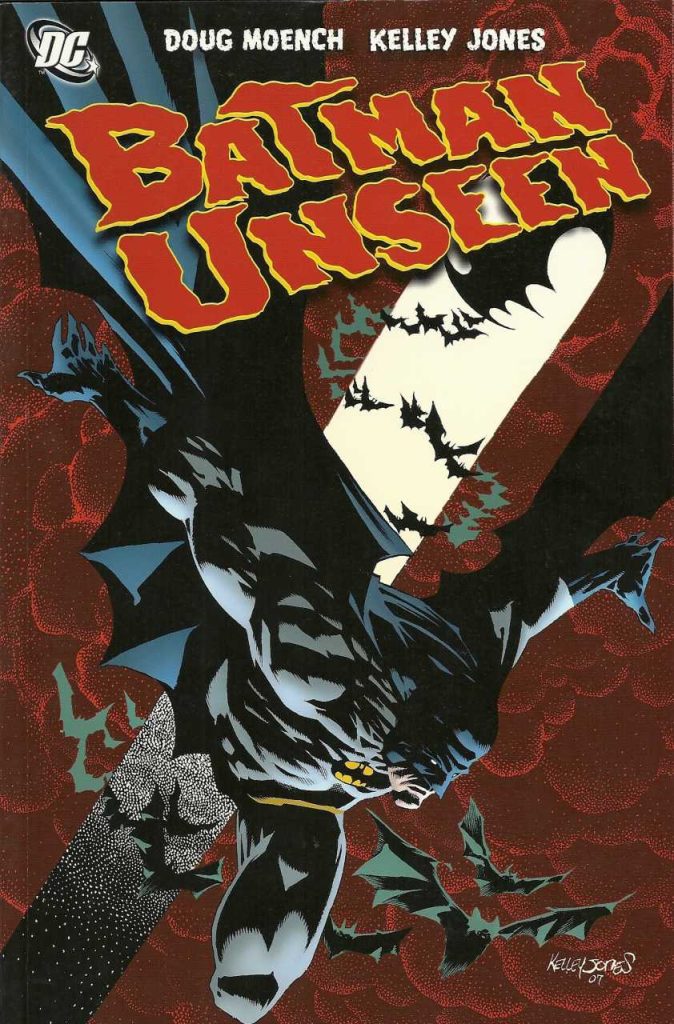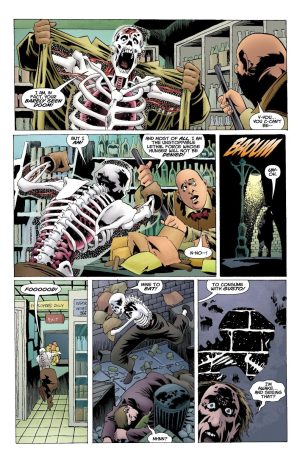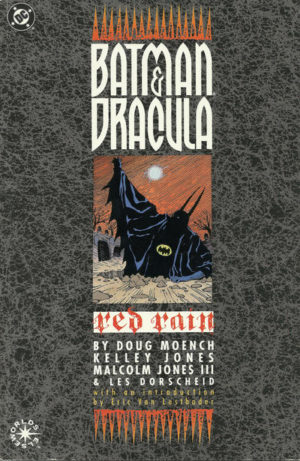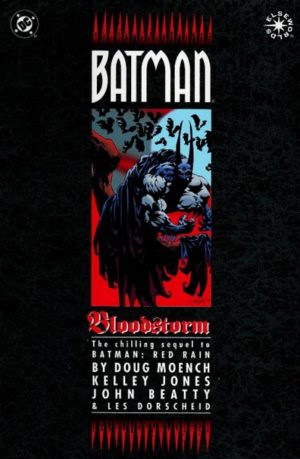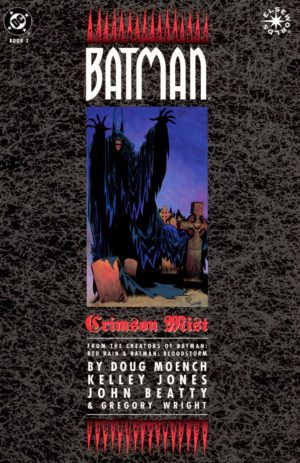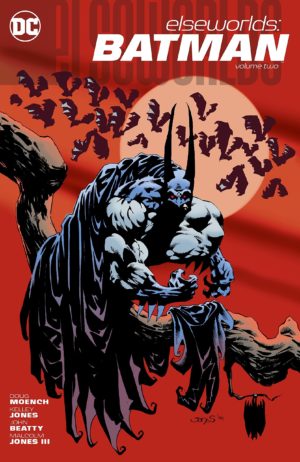Review by Frank Plowright
Biochemist Nigel Glass is handed a lifeline by people willing to finance his unconventional research. It seems too good to be true. It is. Doug Moench reveals early that Glass’ work continues due to gangster Black Mask’s money. However, over a first chapter that concentrates heavily on Glass, Moench also reveals that he’s firstly working to his own agenda, and secondly dancing to his own tune. Although Moench labels this ‘A Lost Tale of Bruce Wayne as Batman’ (as it was issued during a period when Wayne wasn’t Batman), Glass seems constructed as an addition to Gotham’s circus of villains.
His name partly gives the game away. He’s attempting invisibility, and as the sample page shows, Kelly Jones supplies that in visually gruesome stages along the way. Jones’ speciality is gothic horror, and he piles on the shadows as Glass gloats in his lab, oblivious to his own inhuman state. By the time Unseen was published most readers had made up their mind whether or not they liked the exaggerated Batman Jones draws, spiky aspects considerably heightened and the surroundings resembling Frankenstein’s lab. His Black Mask is spine-chilling, almost a disembodied skull in the shadows.
Unseen is, of course, a more horrific variation on The Invisible Man, and possibly because the art is so stylised, Moench has taken a similar approach with the script, the dialogue nowhere near realistic. A pair of gangsters monitoring Glass speak as if scripted by Damon Runyan, and Glass’ dialogue is so over the top Jim Carrey would think twice about gurning along to it. It’s all very self-aware and staged, but makes for a different take on Batman.
For so long Batman’s concern that even Gotham’s standard criminals no longer fear him seems a weak plot, and one not greatly matched with an invisible man. Moench does combine the two themes towards the end, though, and Jones grabs the visual possibilities and really runs with the ideas, which is worth a lot. Less convincing is the time taken for Batman to track Glass down and deal with him, but the upside of that is plenty more pages of Jones art.
Unseen is a project that really polarised the audience when published, but it’s an interesting experiment, and Jones is better here than on Batman stories for which he received greater praise (see recommendations).
